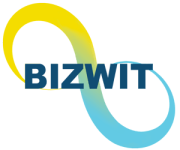Global Industrial Laser System Market is valued approximately at USD 17.29 billion in 2020 and is anticipated to grow with a healthy growth rate of more than 7.26% over the forecast period 2021-2027. In the digital conversion industry, lasers are commonly used for laser marking, laser cutting, laser welding, laser micro-perforation, and laser kiss-cutting. In the construction industry, lasers are used for a variety of applications including forging, reactive sputtering, or passive sputtering, for architectural glass & glass coating, cutting for dismantling work, cutting, or joining for heating, ventilation, and air conditioning (HVAC), and cutting for roofs and facades, to mention few of. Lasers’ flexibility makes them ideal for applications in the decorating and fashion sectors, such as laser branding, laser cutting, laser micro-perforation, and laser drilling. The market is driven by the key factors such as Miniaturization of Component Parts and Enhanced Precision and Accuracy over Conventional Alternatives. For instance, MKS Instruments, Inc. has introduced a new version of the Talon 355-45, a high-power UV laser from Spectra-Physics that enables for quicker UV processing at a reduced cost per component. It’s suitable for PC boards, electrical components, semiconductors, flat panel displays, lithium-ion batteries, and LEDs in consumer electronics, clean energy, and other high-demand industrial applications. Furthermore, The COVID-19 virus has been seen in the industrial laser systems market, affecting the near-term demand environment and internal operations. The market for new laser systems or retrofits is anticipated to be slow as numerous component manufacturers confront material sourcing and working capital issues. Electronic component manufacturing supply chains, for instance, have been severely disrupted due to their concentration in China. In March 2020, as medical-related contracts became a top priority and demand for them increased, distributors and other component suppliers were put under even more pressure. However, Regulation Compliance Associated with Laser Usage, may impede market growth over the forecast period of 2021-2027.
North American region is expected to lead the market due to technological advancements in different industries such as manufacturing, aerospace, automotive, and others. Similarly, the region is home to a number of significant vendors, including IPG Photonics and Coherent Inc., among others.
Major market player included in this report are:
Han’s Laser Technology Co., Ltd.
JENOPTIK
II-VI Incorporated
TRUMPF GmbH + Co KG
IPG Photonics Corporation
Newport Corporation
nLIGHT, Inc.
ACSYS Lasertechnik US Inc.
Coherent, Inc.
Quantel Group
The objective of the study is to define market sizes of different segments & countries in recent years and to forecast the values to the coming eight years. The report is designed to incorporate both qualitative and quantitative aspects of the industry within each of the regions and countries involved in the study. Furthermore, the report also caters the detailed information about the crucial aspects such as driving factors & challenges which will define the future growth of the market. Additionally, the report shall also incorporate available opportunities in micro markets for stakeholders to invest along with the detailed analysis of competitive landscape and product offerings of key players. The detailed segments and sub-segment of the market are explained below:
By type of laser:
Fiber
Solid-state
CO2
Other Types
By End user industry:
Cutting
Welding
Marking
Drilling
Other Applications
By application:
Semiconductor and Electronics
Automotive
Aerospace and Defence
Medical
Other End-user Industries
By Region:
North America
U.S.
Canada
Europe
UK
Germany
France
Spain
Italy
ROE
Asia Pacific
China
India
Japan
Australia
South Korea
RoAPAC
Latin America
Brazil
Mexico
Rest of the World
Furthermore, years considered for the study are as follows:
Historical year – 2018, 2019
Base year – 2020
Forecast period – 2021 to 2027.
Target Audience of the Global Industrial Laser System Market in Market Study:
Key Consulting Companies & Advisors
Large, medium-sized, and small enterprises
Venture capitalists
Value-Added Resellers (VARs)
Third-party knowledge providers
Investment bankers
Investors



